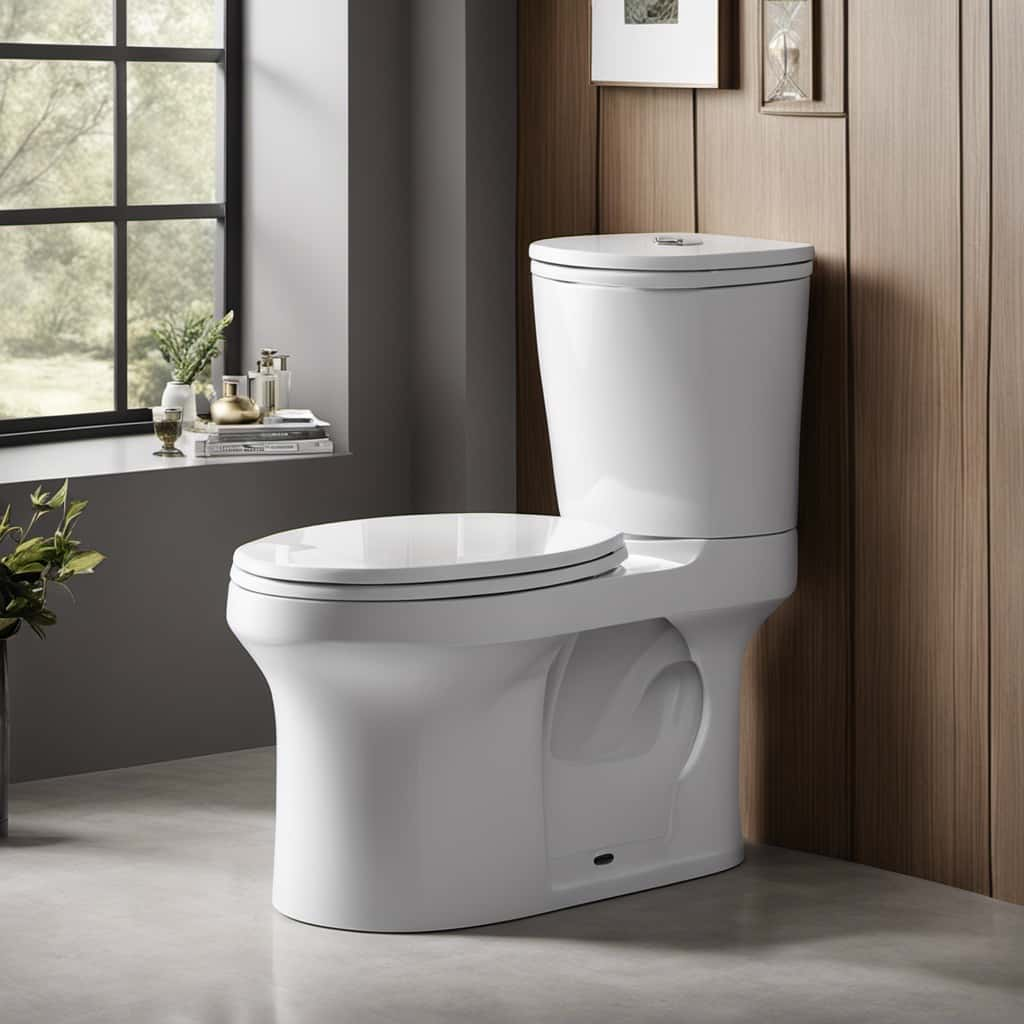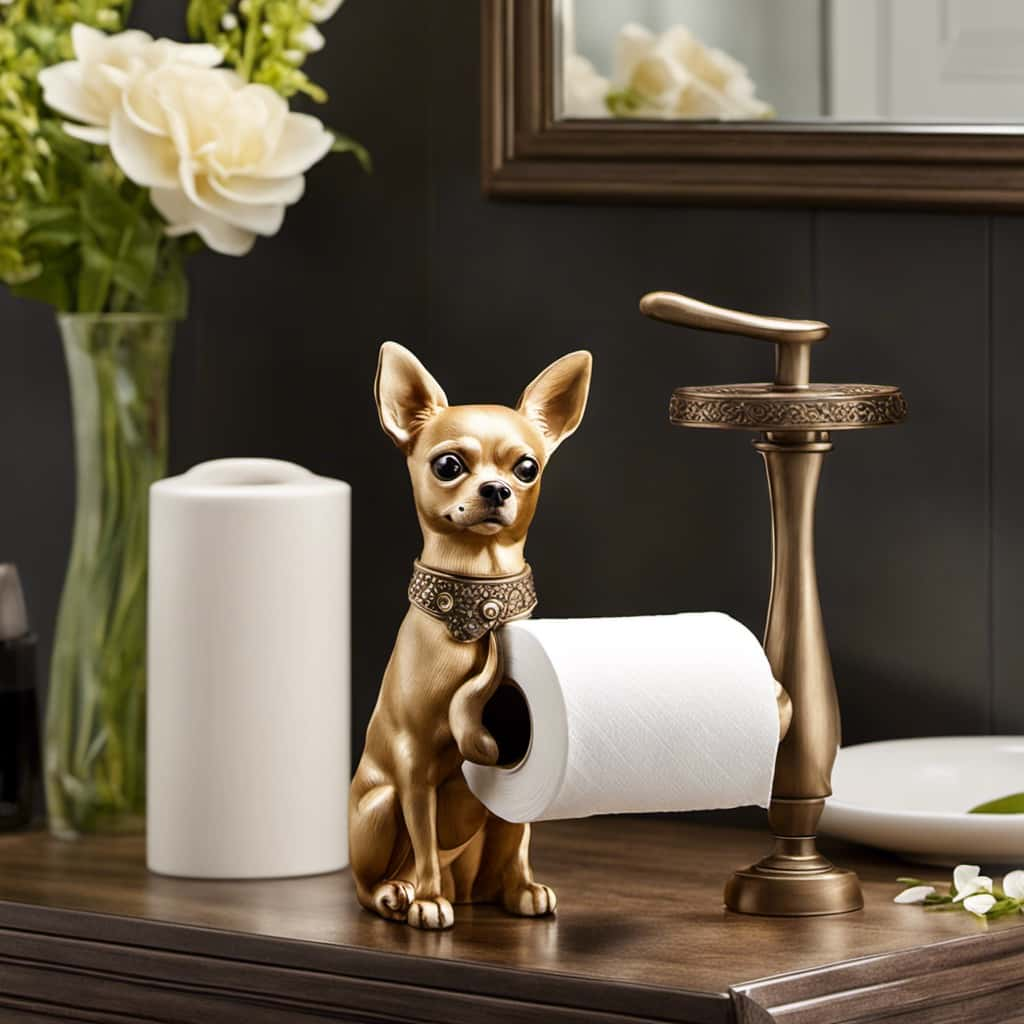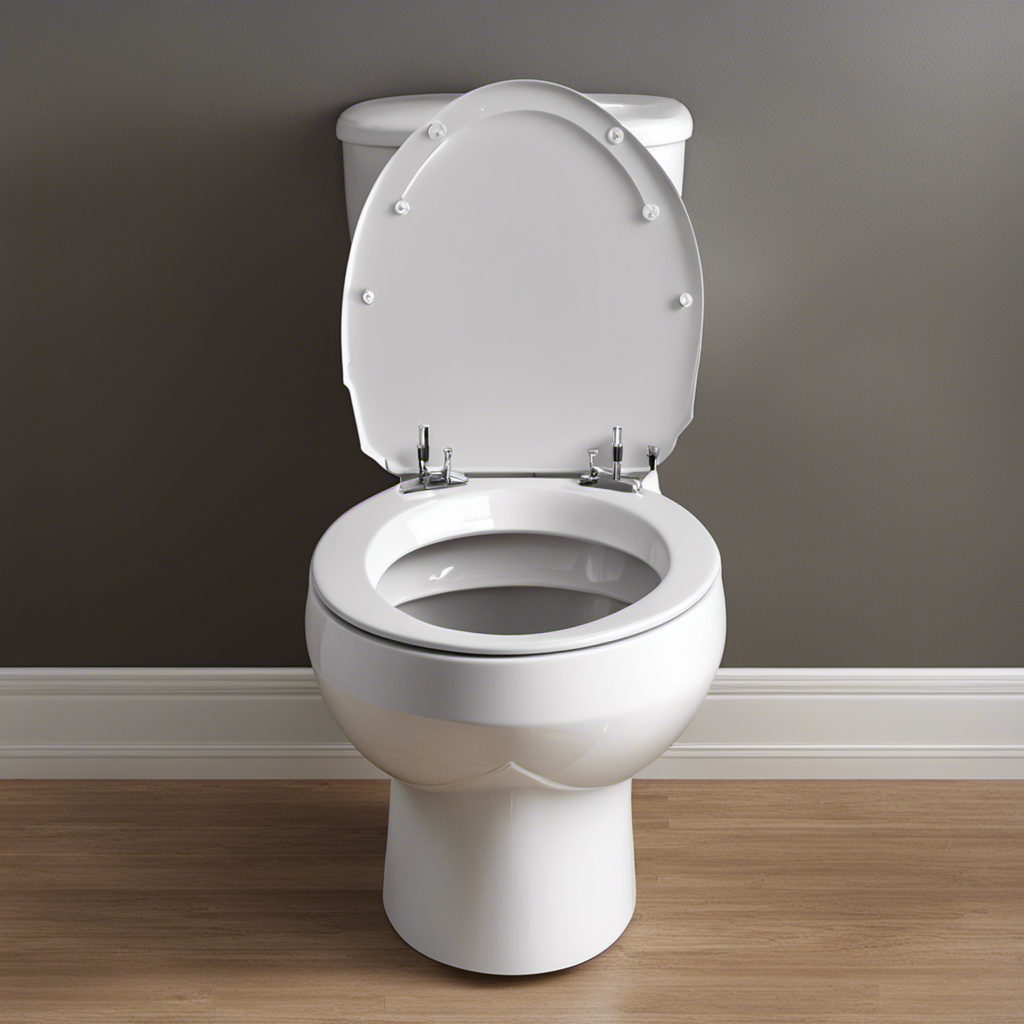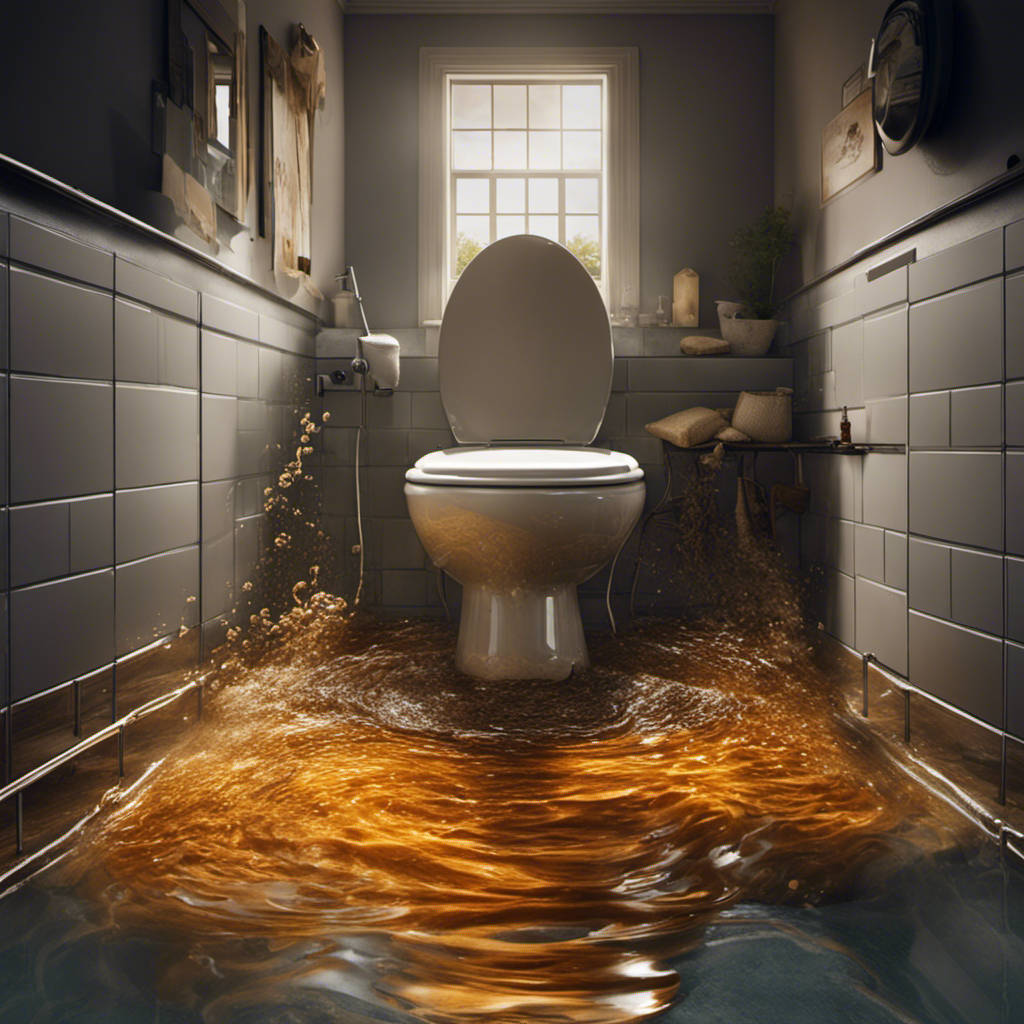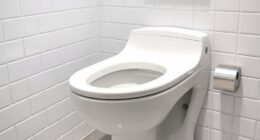Is it possible to install a marine toilet in our RV? It might sound strange, but in the quest to maximize space and efficiency within our recreational vehicles, every possibility should be explored.
In this article, we will explore the key differences between marine toilets and RV toilets, the pros and cons of using a marine toilet in an RV, and address common misconceptions.
So, let’s dive in and unravel the mysteries of marine toilets in the world of RVs.
Key Takeaways
- Marine toilets are designed to use less water, making them ideal for RV owners who frequently boondock or have limited water supply.
- Marine toilets are compact and versatile, allowing for flexibility in design and maximizing space utilization in RVs.
- Marine toilet systems are often more durable and require less frequent repairs or replacements.
- Using a marine toilet in an RV offers convenience, cost-effectiveness, and space optimization.
Marine Toilet Vs RV Toilet: Key Differences
When comparing marine toilets and RV toilets, the key differences lie in their design and functionality.
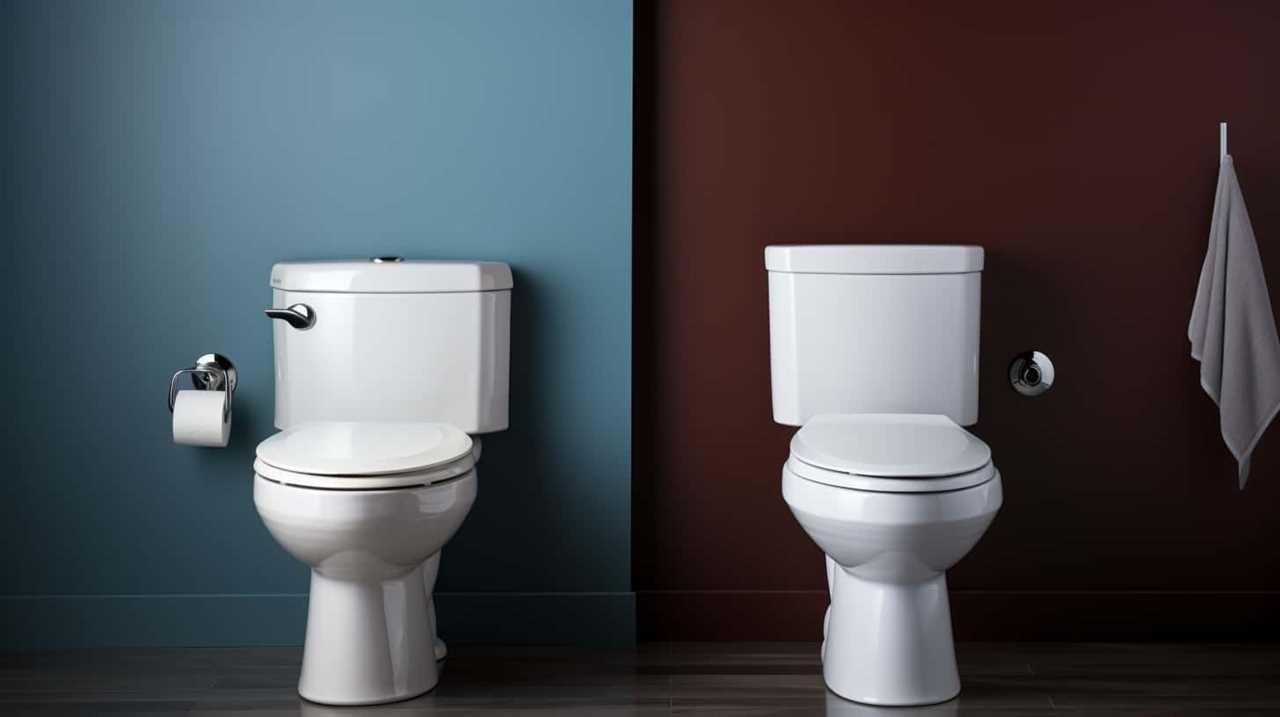
In terms of water usage comparison, marine toilets typically use saltwater while RV toilets use freshwater. Marine toilets are designed to flush with a minimal amount of water, conserving water resources on boats.
On the other hand, RV toilets have larger water tanks and use a higher volume of freshwater per flush.
Another significant difference is the odor control strategies employed. Marine toilets often use odor control chemicals or systems to combat the unique challenges of odor containment on boats.
RV toilets, on the other hand, utilize sealed tanks and venting systems to minimize odors inside the vehicle.
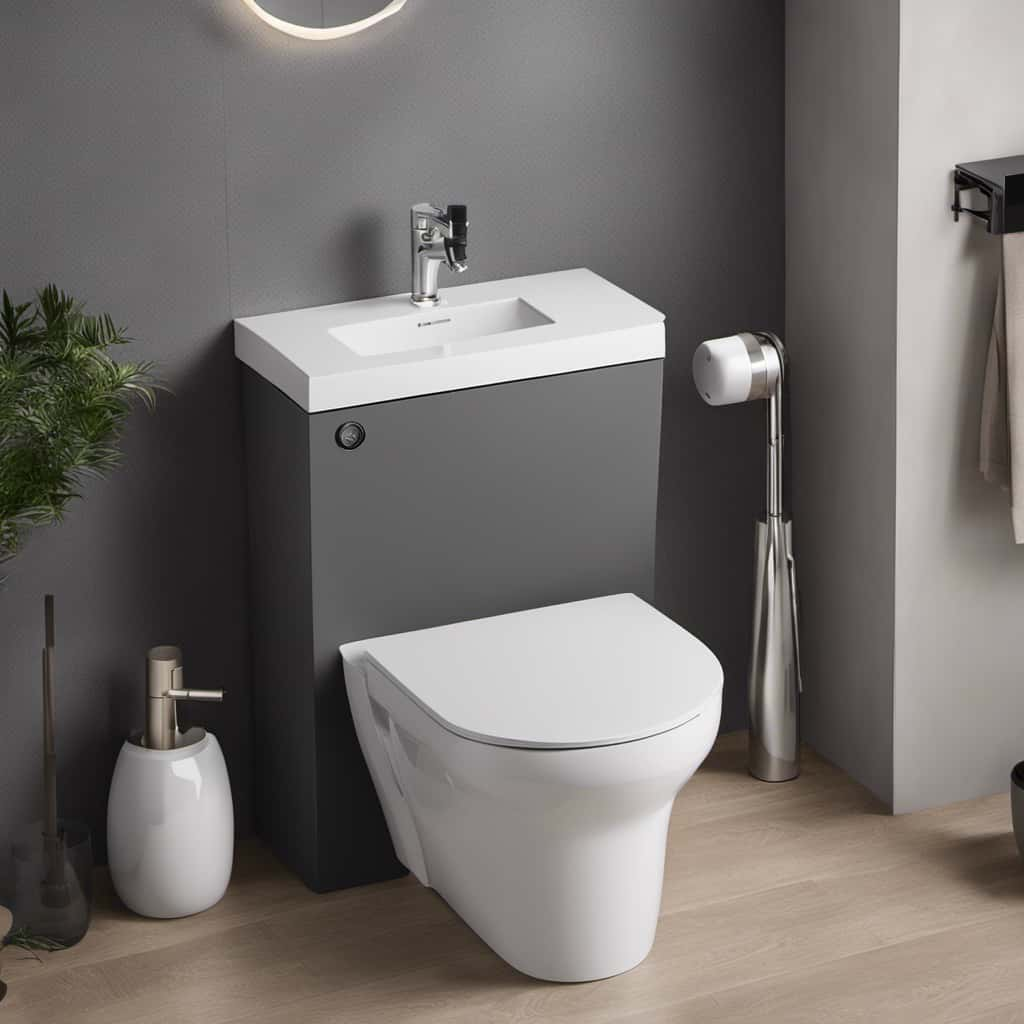
Understanding these differences is crucial when choosing the right toilet for your specific needs, whether it be on a boat or an RV.
Understanding the Plumbing System in an RV
To understand the plumbing system in an RV, let’s delve into how freshwater and wastewater are stored and managed within the vehicle.
The freshwater system in an RV typically consists of a freshwater tank, a water pump, and various plumbing lines. The tank holds a specific amount of water, which can vary depending on the size of the RV. The water pump is responsible for pressurizing the water and delivering it to the faucets, shower, and toilet.
On the other hand, the wastewater system includes a holding tank for gray water (from sinks and showers) and a separate tank for black water (from the toilet). It’s crucial to be mindful of water consumption to avoid filling up the tanks too quickly.

Regular maintenance, such as flushing the tanks and using appropriate chemicals, is essential to prevent odors and keep the plumbing system functioning properly.
Pros of Using a Marine Toilet in an RV
Using a marine toilet in an RV offers several advantages for RV owners. Here are three reasons why using a marine toilet can be beneficial:
- Water-saving strategies: Marine toilets are designed to use less water compared to traditional RV toilets. They utilize a vacuum or macerator system that requires less water for flushing. This not only conserves water, but also reduces the need for frequent refills, making it ideal for RV owners who frequently boondock or stay in areas with limited water supply.
- Cost effectiveness comparison: Marine toilets can be more cost-effective in the long run. While they may have a higher upfront cost compared to traditional RV toilets, their water-saving capabilities can lead to significant savings on water bills and reduced maintenance costs. Additionally, marine toilet systems are often more durable and require less frequent repairs or replacements.
- Versatility and compactness: Marine toilets are designed to be compact and versatile, making them suitable for RVs with limited space. They can be installed in various locations within the RV, allowing for flexibility in design and maximizing space utilization.
Using a marine toilet in an RV has its advantages, but it’s important to consider the potential drawbacks as well.
Cons of Using a Marine Toilet in an RV
Using a marine toilet in an RV has its drawbacks.
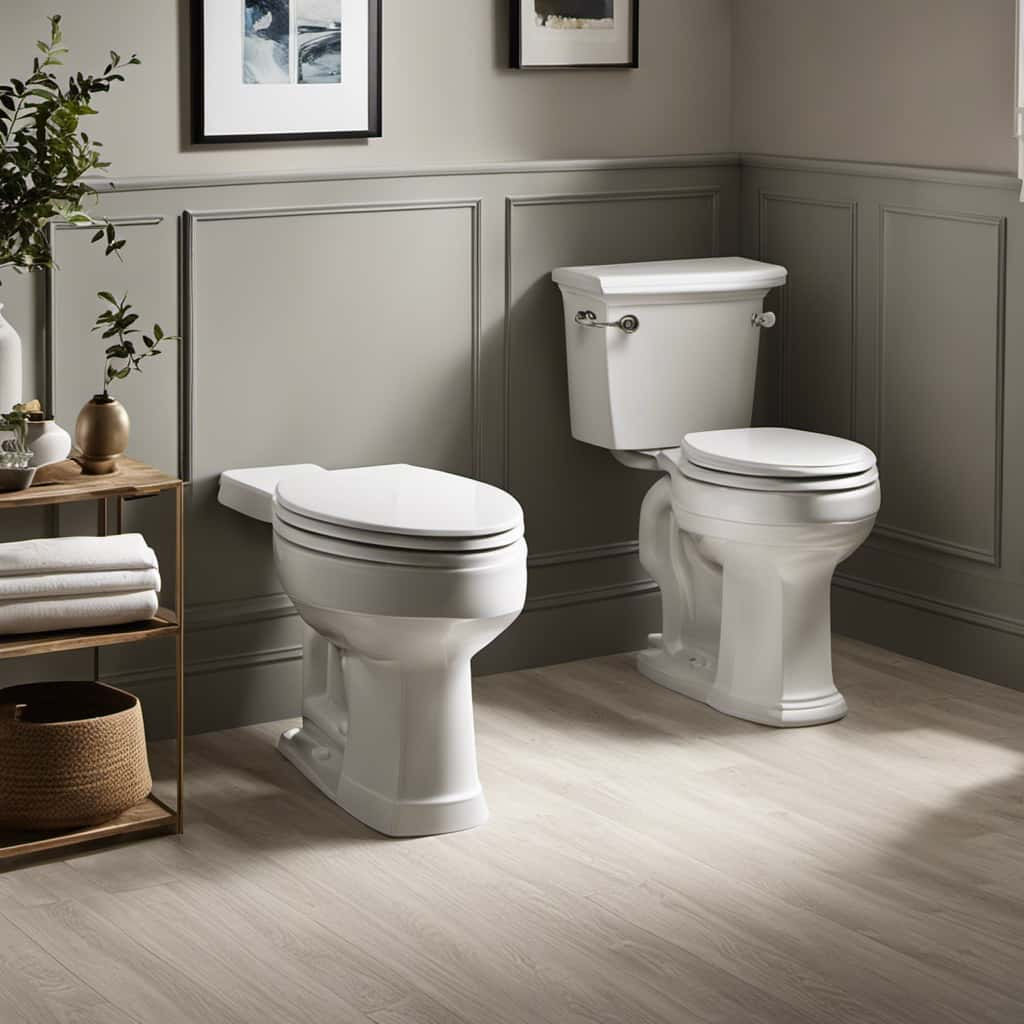
Firstly, marine toilets have limited waste capacity compared to traditional RV toilets, requiring more frequent emptying and maintenance.
Additionally, finding replacement parts for marine toilets can be challenging, as they aren’t as commonly available as those for RV toilets.
These factors should be taken into consideration when deciding whether to use a marine toilet in an RV.
Limited Waste Capacity
With its limited waste capacity, a marine toilet in an RV can pose challenges for us. Here are three key reasons why this is the case:
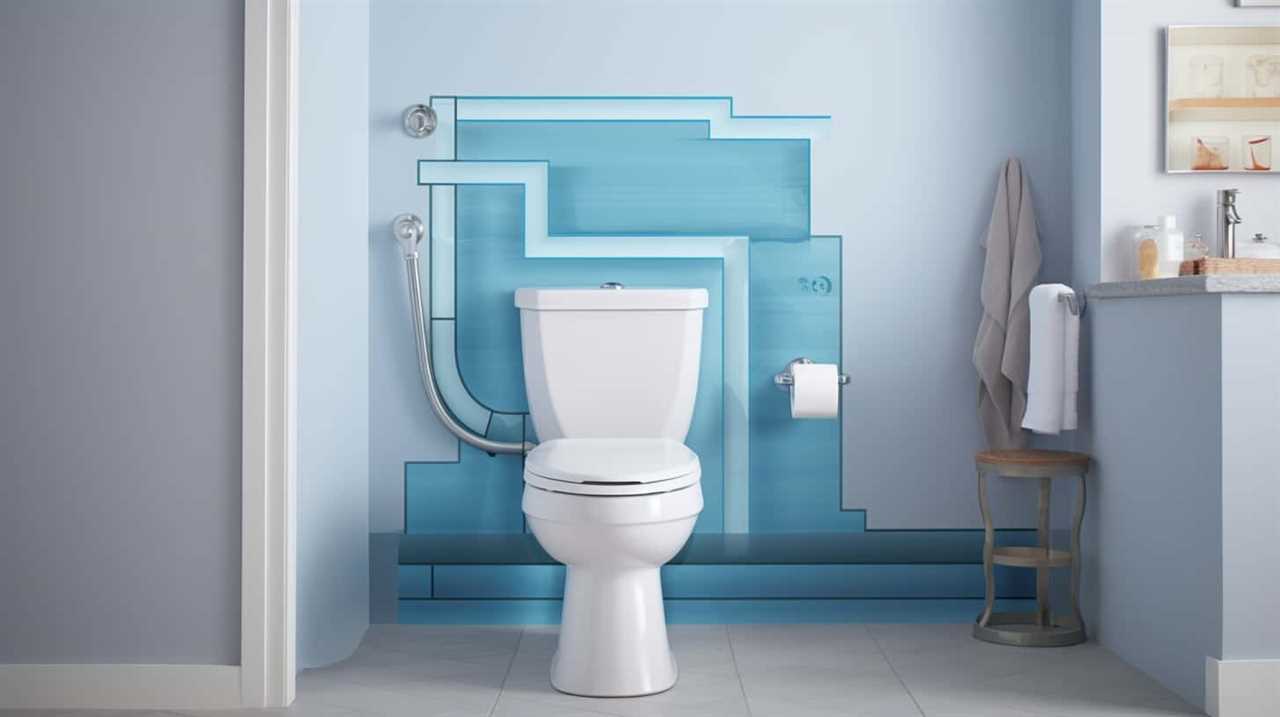
- Water Usage Comparison: Marine toilets typically use more water per flush compared to RV toilets. This can lead to faster filling of the waste tank, requiring more frequent emptying and potentially limiting our time on the road.
- Legal Requirements and Restrictions: Many states have specific regulations regarding the disposal of waste from marine toilets in RVs. These regulations may restrict where we can dispose of the waste, making it more difficult to find appropriate facilities while traveling.
- Decreased Waste Holding Capacity: Marine toilets generally have smaller waste holding tanks compared to RV toilets. This means that we’ll need to empty the tank more frequently, which can be inconvenient and time-consuming.
Considering these limitations, it’s important to carefully consider the waste capacity of a marine toilet before using it in an RV.
Difficult to Find Parts
We have also experienced challenges when it comes to finding parts for a marine toilet in our RV. While there are some similarities between marine toilets and RV toilets, they are not exactly the same. This means that finding specific marine toilet parts for maintenance and repair can be difficult. The limited availability of these parts can cause delays in fixing any issues that arise with the marine toilet in our RV. To illustrate the frustration, here is a table showcasing the common marine toilet parts we have struggled to find:
| Marine Toilet Parts | Difficulty in Finding |
|---|---|
| Seals and gaskets | High |
| Pump assembly | Moderate |
| Flapper valve | Low |
As you can see, locating essential marine toilet parts can be a time-consuming process. It is crucial to consider this factor before deciding to use a marine toilet in your RV, as it could potentially lead to prolonged maintenance and repair times.
Compatibility Issues to Consider
When considering the compatibility of a marine toilet in an RV, there are a few important points to keep in mind.
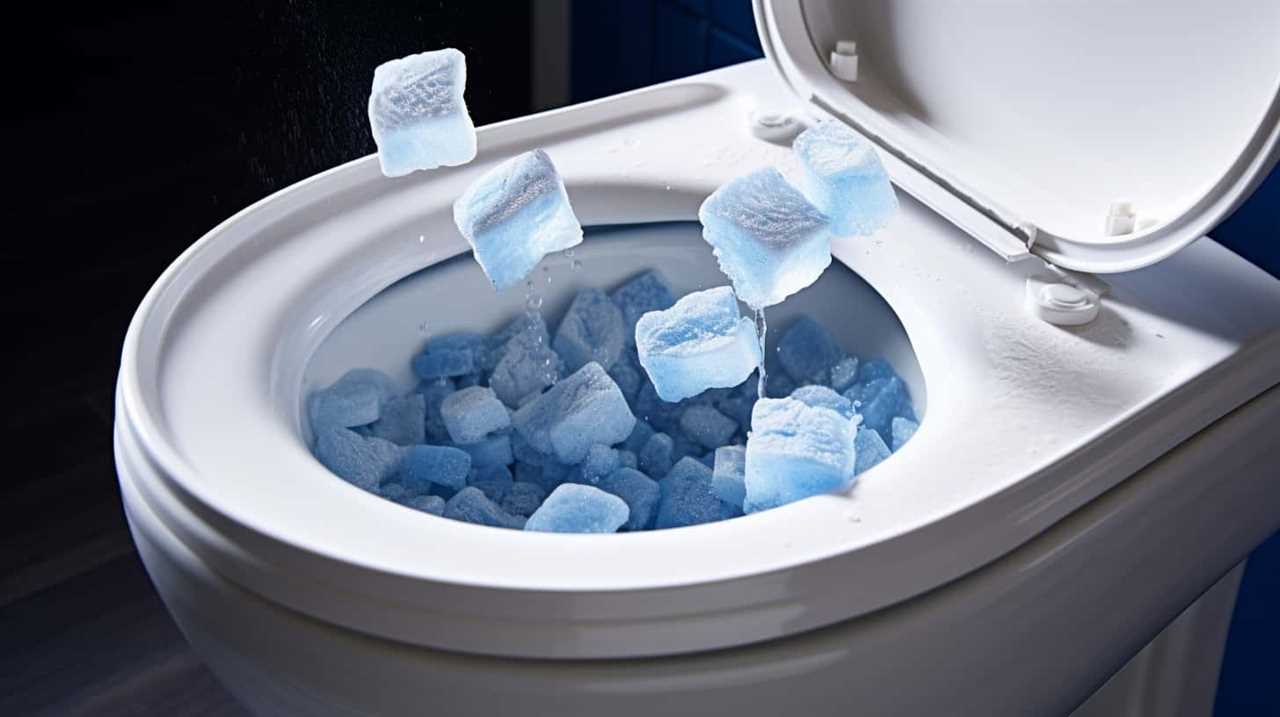
Firstly, the plumbing systems in marine toilets and RVs can differ, which may require some modifications for proper installation.
Secondly, the space and installation requirements for a marine toilet may not align with the layout and dimensions of an RV bathroom.
It’s crucial to carefully assess these compatibility issues before deciding to use a marine toilet in an RV.
Plumbing System Differences
One important consideration when using a marine toilet in an RV is understanding the plumbing system differences that may lead to compatibility issues. These differences can affect the water pressure and the maintenance schedule of the RV’s plumbing system.
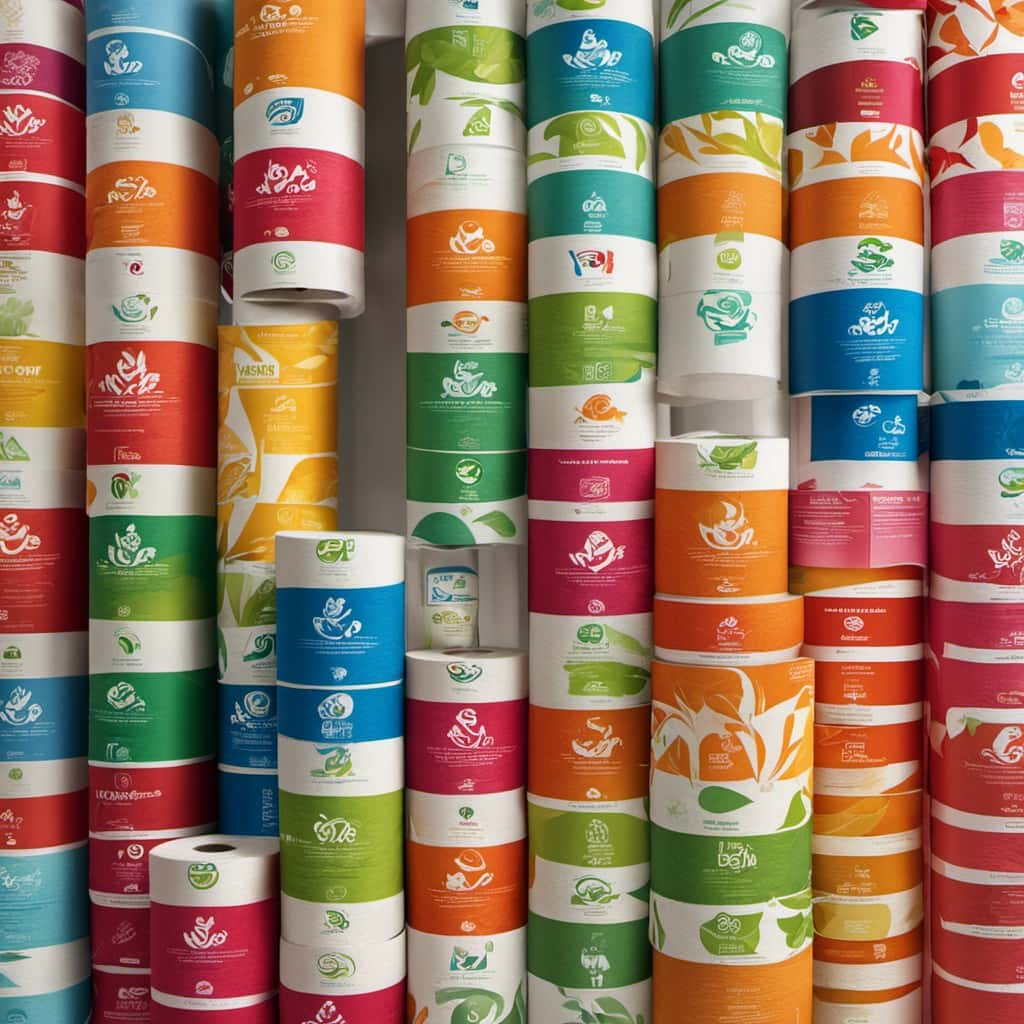
Here are three key points to keep in mind:
- Water Pressure: Marine toilets are designed to operate with lower water pressure compared to RV toilets. This means that if you plan on using a marine toilet in your RV, you may need to make adjustments to the water pressure system to ensure proper functionality.
- Compatibility: The plumbing systems of marine toilets and RVs may have different connectors and fittings. It’s essential to ensure that these components are compatible to avoid leaks or other plumbing issues. You may need to make modifications or use adapters to ensure a proper fit.
- Maintenance Schedule: Marine toilets often have different maintenance requirements compared to RV toilets. It’s crucial to understand these differences and follow the appropriate maintenance schedule to keep your marine toilet in optimal condition while using it in an RV.
Space and Installation Requirements
To continue our discussion on plumbing system differences, let’s now delve into the space and installation requirements when considering the compatibility of using a marine toilet in an RV.
When comparing water usage, marine toilets typically use less water per flush compared to traditional RV toilets. This is due to their design, which incorporates a smaller bowl and a more efficient flushing mechanism.
As for space saving solutions, marine toilets are often designed to be compact and can fit into tight spaces, making them suitable for RVs with limited bathroom area.
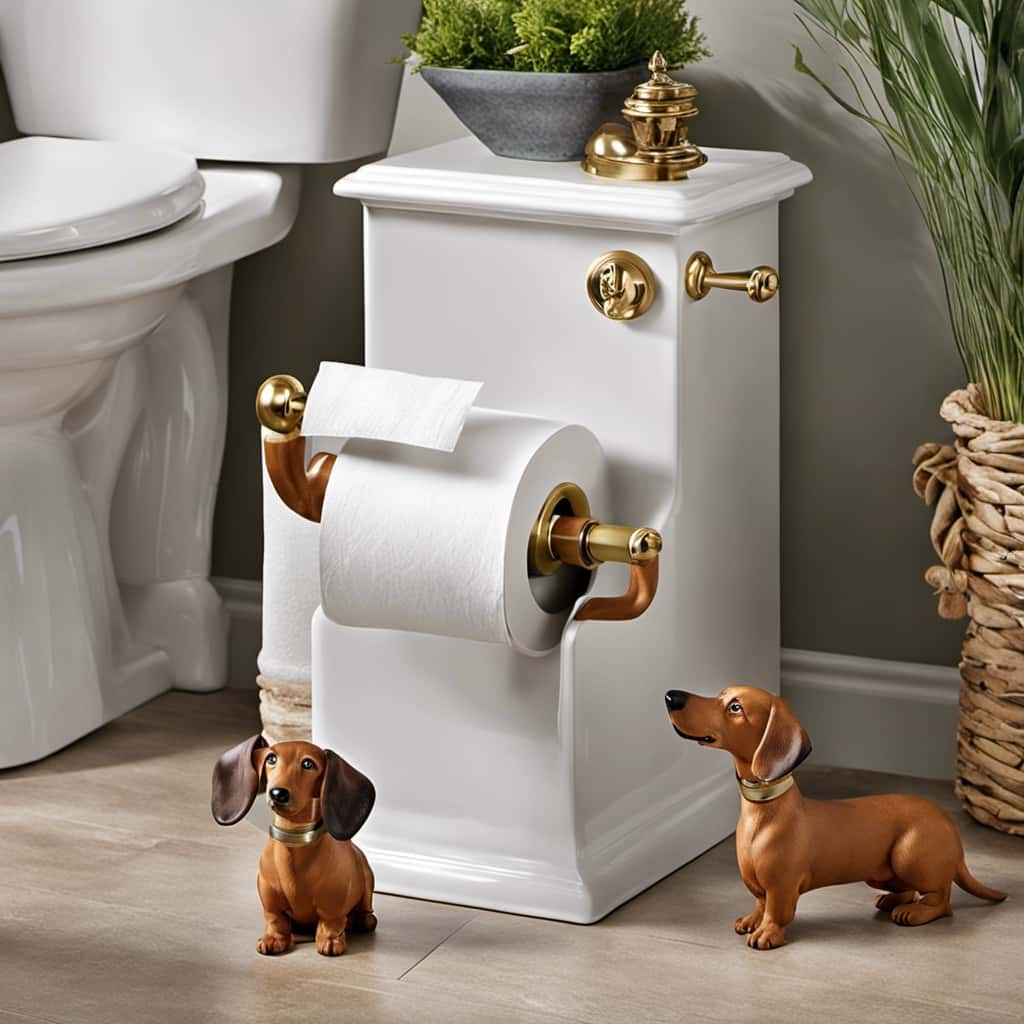
However, it’s important to consider the installation process for a marine toilet in an RV, which may require modifications to the existing plumbing system and electrical connections.
Transitioning into the next section, we’ll explore the installation process for a marine toilet in an RV.
Installation Process for a Marine Toilet in an RV
After researching the compatibility between marine toilets and RVs, we discovered that it’s indeed possible to install a marine toilet in an RV. Here are three important steps to consider when installing a marine toilet in your RV:
- Plumbing: Ensure that your RV’s plumbing system can accommodate a marine toilet. You may need to make modifications to the existing plumbing to connect the marine toilet properly.
- Water Supply: Marine toilets typically require a pressurized water supply. Make sure your RV has a water pump that can provide the necessary water pressure for the toilet to function properly.
- Holding Tank: Marine toilets require a holding tank for waste disposal. Check if your RV already has a suitable holding tank or if you need to install one.
By following these steps, you can successfully install a marine toilet in your RV.
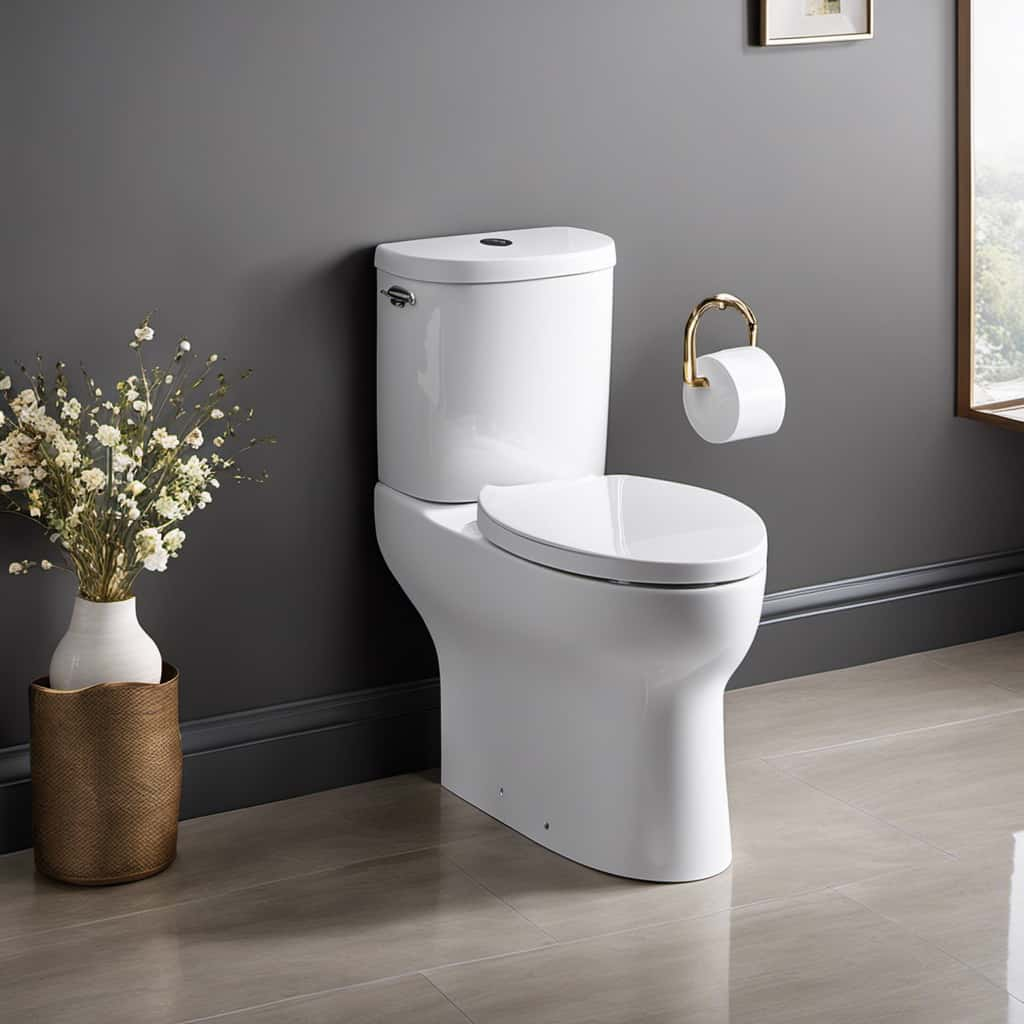
Now, let’s move on to the next section, which discusses maintenance tips for a marine toilet in an RV.
Maintenance Tips for a Marine Toilet in an RV
For optimal performance and cleanliness, we recommend regularly maintaining and cleaning the marine toilet in our RV. Proper maintenance not only ensures the longevity of the toilet but also promotes a hygienic environment. To help you with the upkeep, we have compiled a list of maintenance tips and troubleshooting strategies.
| Maintenance Tips | Troubleshooting Common Issues |
|---|---|
| Regularly flush with water to prevent clogs | Weak flush: check water supply |
| Use biodegradable toilet paper to avoid blockages | Leaks: inspect seals and connections |
| Clean the toilet bowl with a non-abrasive cleaner | Odor: check vent pipe and seals |
| Empty and clean the holding tank regularly | Pump failure: inspect pump and wiring |
Implementing water-saving strategies can also be beneficial. These include using the appropriate water level for flushing and fixing any leaks promptly. By following these maintenance tips and troubleshooting common issues, you can ensure the smooth operation of your marine toilet in the RV.
Now, let’s delve into the water usage comparison between a marine toilet and an RV toilet.
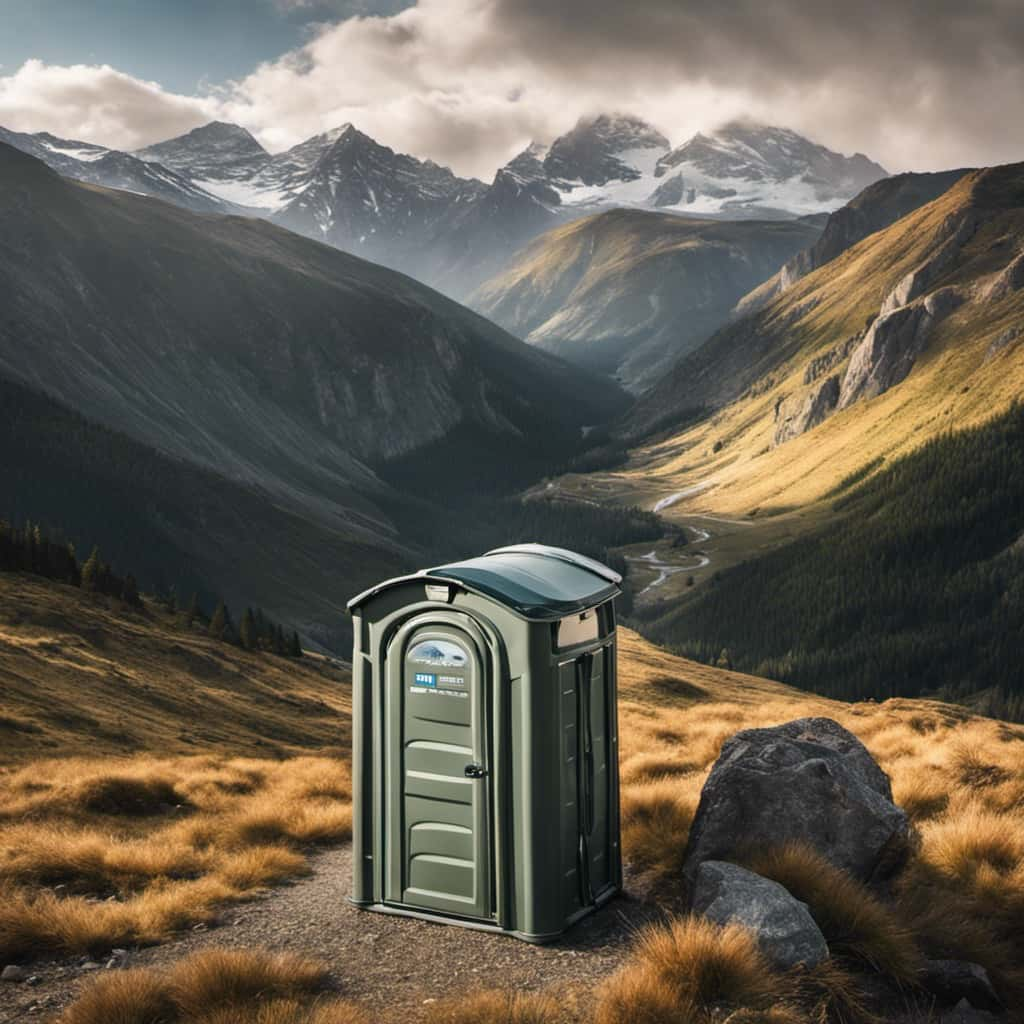
Water Usage Comparison: Marine Toilet Vs RV Toilet
When comparing the water usage of marine toilets and RV toilets, two significant points come to mind: flush volume difference and water conservation strategies.
Marine toilets typically have a smaller flush volume, ranging from 0.5 to 1 gallon per flush, while RV toilets often use 1.6 gallons per flush.
To conserve water in both types of toilets, owners can implement strategies such as using low-flow showerheads, fixing leaks promptly, and practicing mindful flushing habits.
Flush Volume Difference
We noticed a significant difference in flush volume between the marine toilet and the RV toilet. This difference in water usage is essential to consider when comparing the two systems.

Here are three key points to understand the flush volume difference between marine toilets and RV toilets:
- Marine Toilets: The flush volume in marine toilets is typically higher than in RV toilets. This is because marine toilets are designed to handle waste in a marine environment, where water availability isn’t a concern.
- RV Toilets: RV toilets, on the other hand, are designed with water conservation strategies in mind. They use less water per flush compared to marine toilets, ensuring efficient water usage during camping or travel.
- Water Conservation Strategies: RV toilets often incorporate features such as adjustable flush settings, allowing users to control the water volume per flush. Additionally, some RV toilets use vacuum or macerating systems to further reduce water usage while efficiently disposing of waste.
Understanding the flush volume difference between marine toilets and RV toilets is crucial when choosing the right system for your needs. RV toilets prioritize water conservation, making them a suitable choice for eco-conscious campers and travelers.
Water Conservation Strategies
To further explore the water conservation strategies employed in marine toilets compared to RV toilets, let’s delve into the specific features and mechanisms that contribute to efficient water usage.
When it comes to water saving tips and eco-friendly toilet options, both marine toilets and RV toilets have their own advantages.
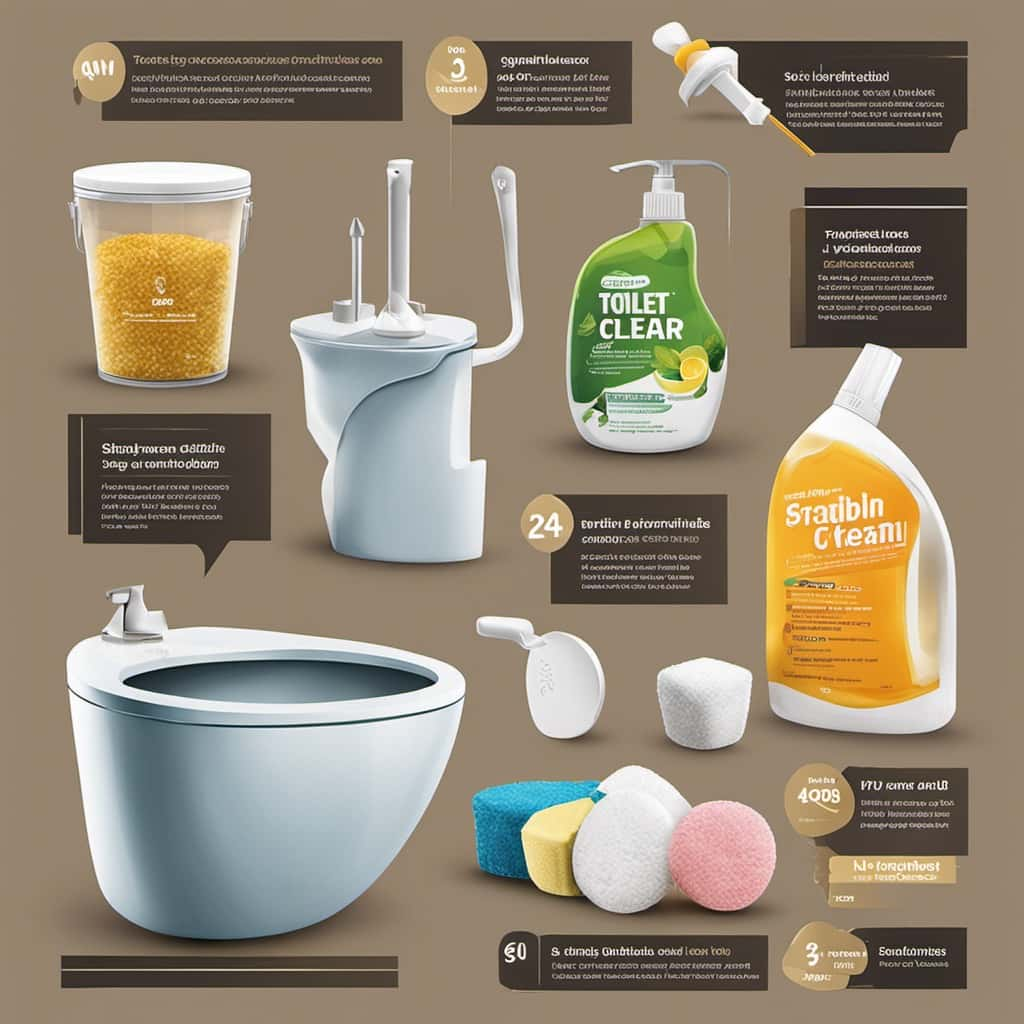
Marine toilets are designed with water-saving mechanisms that allow for efficient water usage. They often use a low-flush system, which uses significantly less water compared to traditional toilets. Additionally, some marine toilets incorporate vacuum technology, which further reduces water consumption by creating a strong suction force during the flushing process.
On the other hand, RV toilets also offer water conservation features. They typically have a smaller flush volume, which means they use less water with each flush. Some RV toilets even have dual-flush options, allowing users to choose between a full or partial flush depending on their needs.
Odor Control in a Marine Toilet for RV Use
How can we effectively control odor in a marine toilet for RV use?
Odor control is an important aspect of maintaining a pleasant environment in your RV. Here are three eco-friendly options for odor control in a marine toilet:
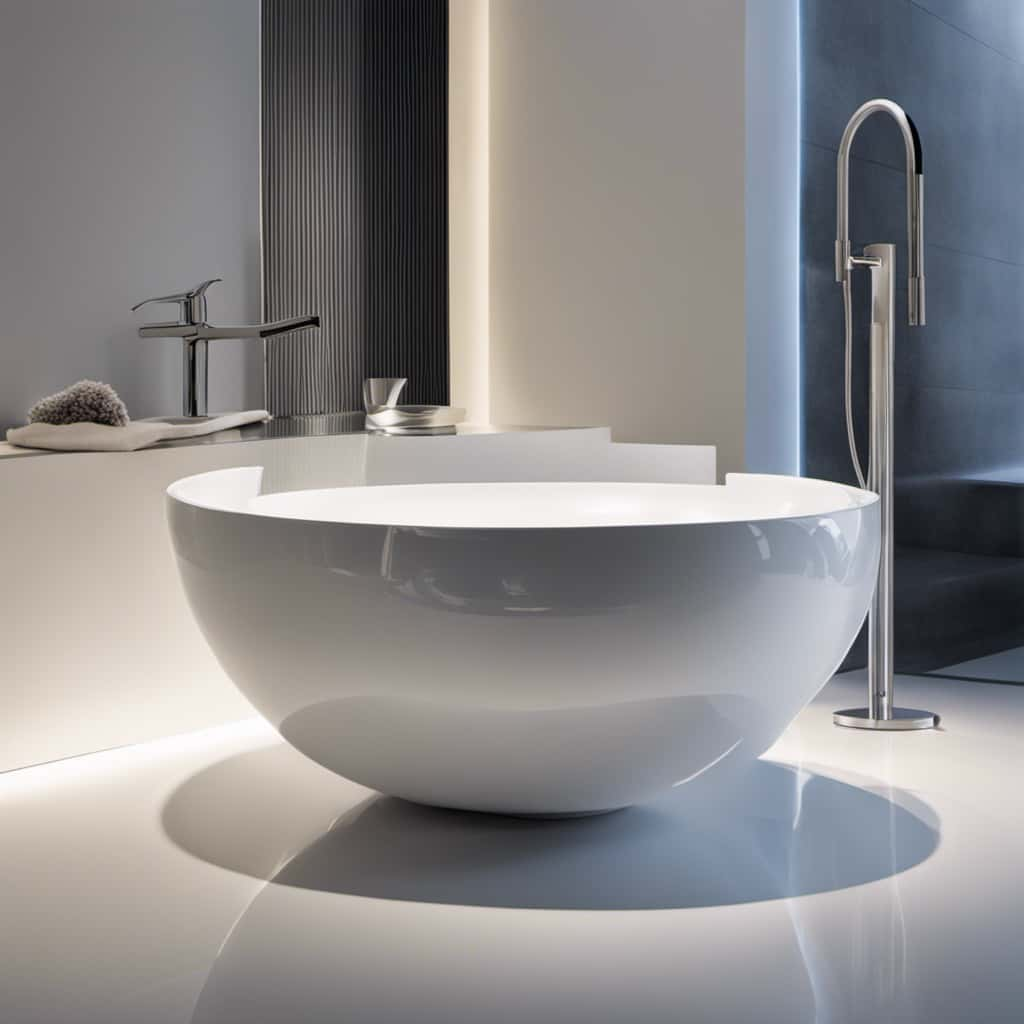
- Proper plumbing maintenance: Regularly clean and maintain the plumbing system of your marine toilet. This includes cleaning the holding tank, ensuring proper venting, and using biodegradable cleaning products to minimize odors.
- Ventilation: Install a ventilation system in your RV to promote airflow and prevent odors from accumulating. This can be achieved through the use of fans or vents that exhaust air outside of the vehicle.
- Odor control products: Consider using eco-friendly odor control products specifically designed for marine toilets. These products help to neutralize odors and keep your RV smelling fresh without harming the environment.
Cost Considerations for Using a Marine Toilet in an RV
Using a marine toilet in an RV comes with certain cost considerations. One of the primary costs to consider is the initial purchase and installation of the marine toilet itself. Marine toilets designed for RV use can range in price from around $200 to $800, depending on the brand and features.
Additionally, there are maintenance costs to keep in mind. Marine toilets require regular cleaning and maintenance to prevent clogs and ensure proper functioning. This may include purchasing specialized cleaning products and replacement parts as needed. It’s also important to factor in the cost of water usage, as marine toilets typically require more water for flushing compared to traditional RV toilets.
By considering these marine toilet cost and maintenance costs, RV owners can make informed decisions about using a marine toilet in their vehicles.
Transition: In addition to cost considerations, it’s important to be aware of the legal requirements and restrictions that come with using a marine toilet in an RV.
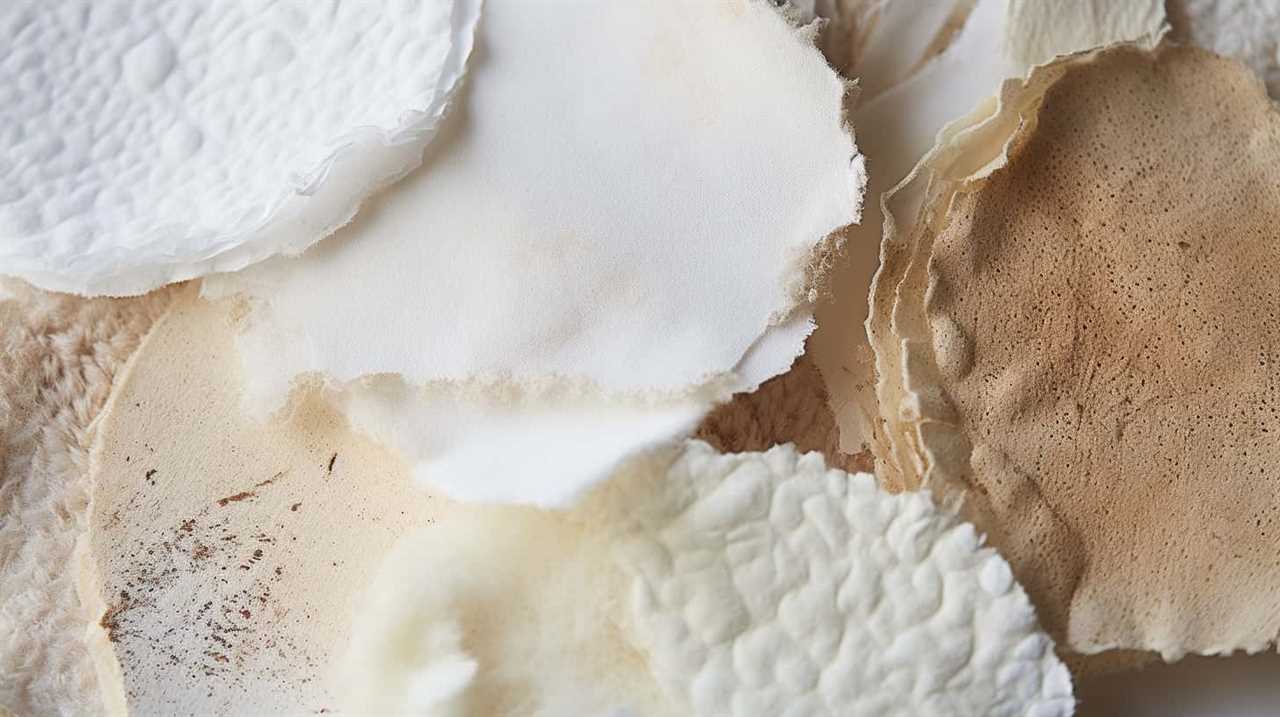
Legal Requirements and Restrictions
When using a marine toilet in our RV, we need to be aware of the legal requirements and restrictions. It’s important to understand the regulations in order to ensure compliance and avoid any potential fines or penalties. Here are three key points to consider:
- Water saving strategies: Many areas have restrictions on water usage, especially in regions experiencing drought or water scarcity. It’s crucial to implement water-saving strategies when using a marine toilet in an RV. This can include using low-flow flush options, minimizing flushes when possible, and utilizing water-efficient cleaning methods.
- Legal restrictions and regulations: Different states and countries may have specific laws regarding the use of marine toilets in RVs. It’s essential to familiarize ourselves with these regulations to ensure compliance. Some areas may require the use of specific types of marine toilets or may have restrictions on where waste can be disposed of.
- Proper waste disposal: Properly disposing of waste isn’t only a legal requirement but also an important aspect of environmental responsibility. It’s crucial to follow guidelines for waste disposal, such as using designated dump stations or wastewater treatment facilities. This helps to protect the environment and prevent contamination of water sources.
Understanding and adhering to the legal requirements and restrictions associated with using a marine toilet in an RV is essential for responsible and sustainable travel. By implementing water-saving strategies and following proper waste disposal guidelines, we can ensure compliance while minimizing our impact on the environment.
In the next section, we’ll explore some tips for maximizing space with a marine toilet in an RV.
Tips for Maximizing Space With a Marine Toilet in an RV
To maximize space with a marine toilet in our RV, we prioritize efficient storage solutions.
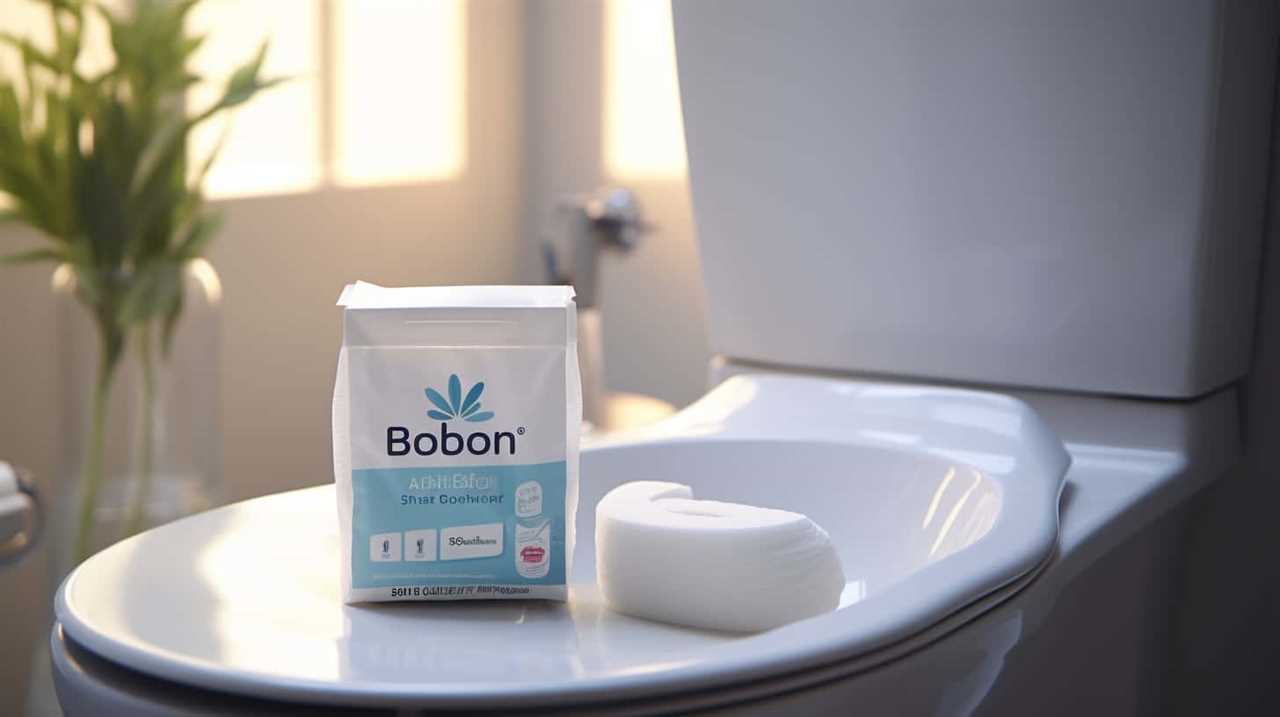
When it comes to water saving tips, consider using a low-flow marine toilet that uses less water with each flush. This not only conserves water but also helps in maximizing the limited water storage capacity in an RV.
Another tip is to install a water-efficient showerhead and faucet to further reduce water usage.
In terms of maintenance recommendations, regular cleaning and proper waste disposal are crucial. Use biodegradable toilet paper and avoid flushing anything other than human waste and toilet paper. Regularly empty and clean the holding tank to prevent odors and clogs.
Lastly, consider installing a ventilation system to improve air circulation and reduce moisture buildup.
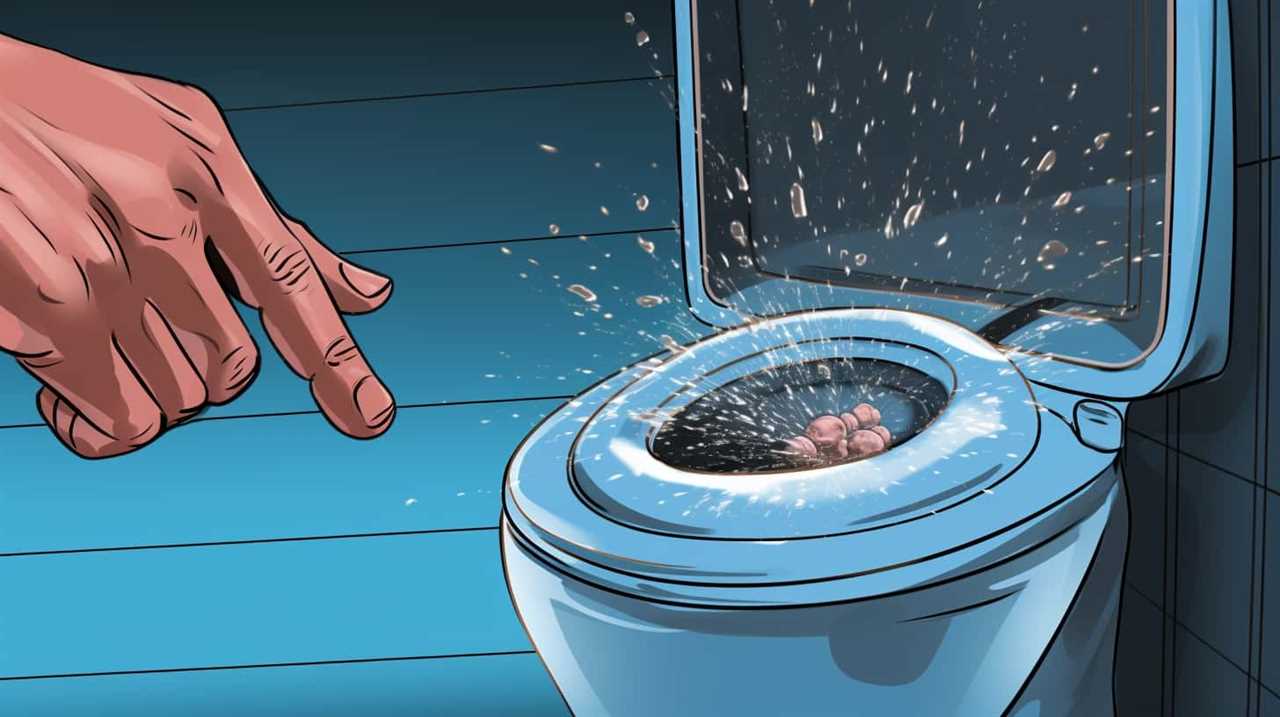
Common Misconceptions About Using a Marine Toilet in an RV
There are several common misconceptions about using a marine toilet in an RV that we need to address.
One of the main misconceptions is that marine toilets and RV toilets are the same, but they actually have some key differences.
Another misconception is that installing a marine toilet in an RV is a simple and straightforward process, when in reality, it requires careful consideration of compatibility and modifications.
Marine Vs. RV Toilets
We prefer marine toilets over RV toilets due to their compact design and efficient water usage. When comparing marine toilets to RV toilets, there are a few key differences to consider:
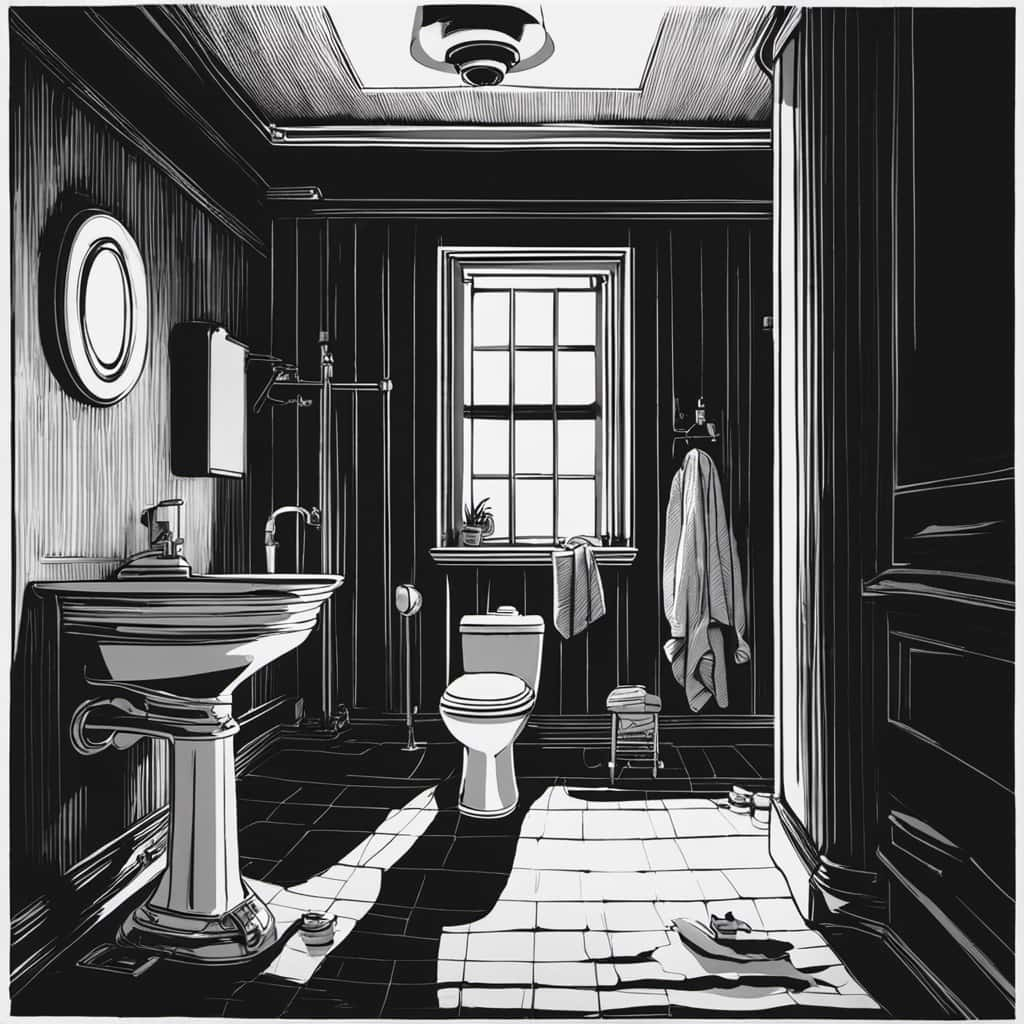
- Water Consumption: Marine toilets are designed to use minimal amounts of water, making them more eco-friendly and efficient. RV toilets, on the other hand, tend to use more water per flush.
- Durability: Marine toilets are built to withstand the harsh conditions of the sea, making them more durable and long-lasting. RV toilets may not be as sturdy and may require more frequent repairs or replacements.
- Space Efficiency: Marine toilets are designed to maximize limited space on boats, making them more compact and space-efficient. This can be beneficial in RVs where space is also limited.
Considering these factors, marine toilets can be a suitable option for RV owners looking for a compact and water-efficient toilet solution. However, it’s important to note that installation and compatibility may vary, which we’ll discuss in the next section.
Installation and Compatibility
Continuing our discussion on marine toilets versus RV toilets, let’s address some common misconceptions about using a marine toilet in an RV.
One misconception is that marine toilets use significantly more water than RV toilets. However, in reality, the water usage comparison between the two is quite similar. Both marine and RV toilets typically use around 1 to 2 gallons of water per flush.
Another misconception is that marine toilets require more maintenance than RV toilets. While it’s true that marine toilets may require additional care due to their exposure to saltwater, proper maintenance can ensure their smooth operation. Regular cleaning, checking for leaks, and using marine-specific cleaning products are some maintenance tips to keep in mind when using a marine toilet in an RV.
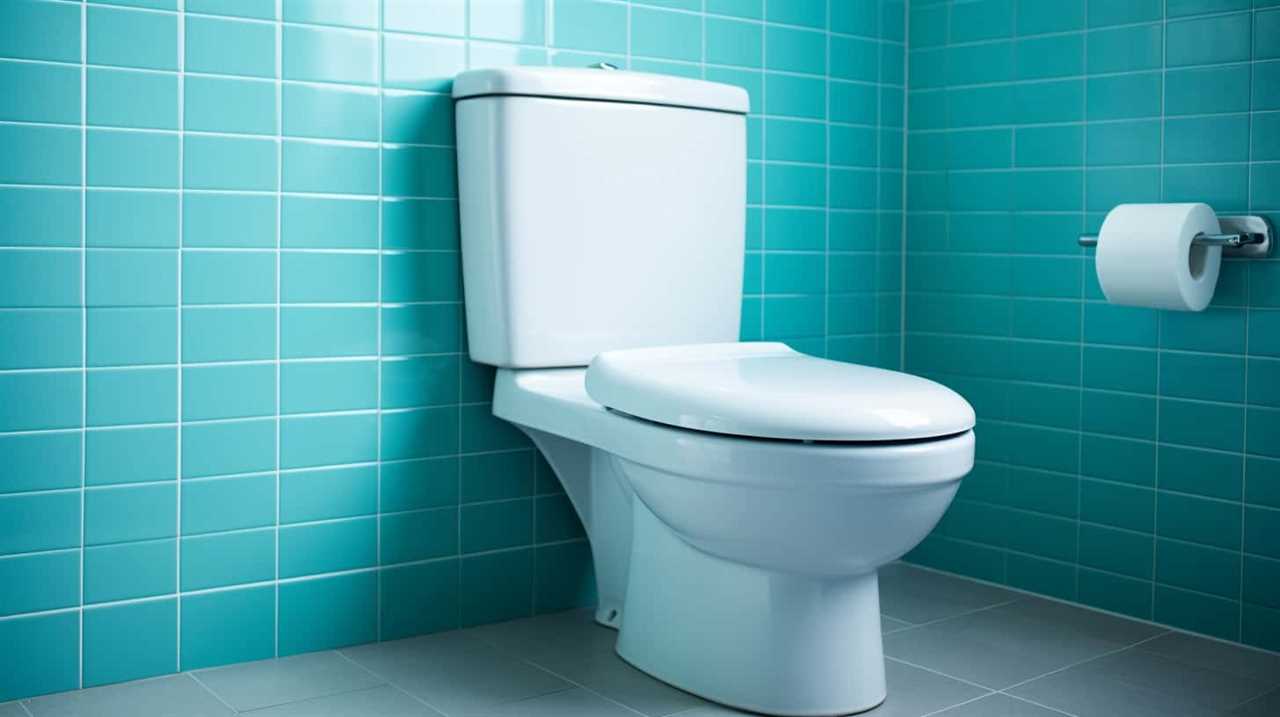
How to Properly Dispose of Waste From a Marine Toilet in an RV
To properly dispose of waste from a marine toilet in an RV, we need to follow specific guidelines and regulations. Here are three important steps to ensure eco-friendly waste disposal:
- Utilize marine toilet alternatives: Consider using composting toilets or portable cassette toilets as alternatives to traditional marine toilets. These options are more environmentally friendly and can help minimize the impact on the RV’s waste system.
- Empty waste at designated disposal sites: Locate RV dump stations or other designated waste disposal facilities along your travel route. These sites are equipped to handle the proper disposal of waste from marine toilets. Be sure to follow any specific regulations or guidelines provided at these locations.
- Use biodegradable products: When using your marine toilet, opt for biodegradable toilet paper and waste treatment chemicals. These products are designed to break down more easily, reducing the strain on the RV’s waste system and minimizing environmental impact.
Expert Opinions and Experiences: User Testimonials
While some experts have had positive experiences using marine toilets in RVs, others have encountered challenges and recommend alternative options. User testimonials provide valuable insights into the pros and cons of using marine toilets in RVs. One user reported that the marine toilet offered a compact and efficient solution for their RV, with minimal water usage compared to traditional RV toilets. However, another user mentioned legal restrictions on the use of marine toilets in certain areas, making it inconvenient for travel. To summarize the user testimonials, we have created the following table:
| User Testimonials | Pros | Cons |
|---|---|---|
| User 1 | – Compact and efficient |
- Minimal water usage | – Legal restrictions in some areas |
| User 2 | – – | – Legal restrictions in some areas |
Based on these testimonials, it is crucial for RV owners to consider water usage comparison and legal restrictions before deciding to use a marine toilet in their RV.
Conclusion
In conclusion, while using a marine toilet in an RV may seem like a convenient option, it’s important to consider the compatibility issues and potential drawbacks.
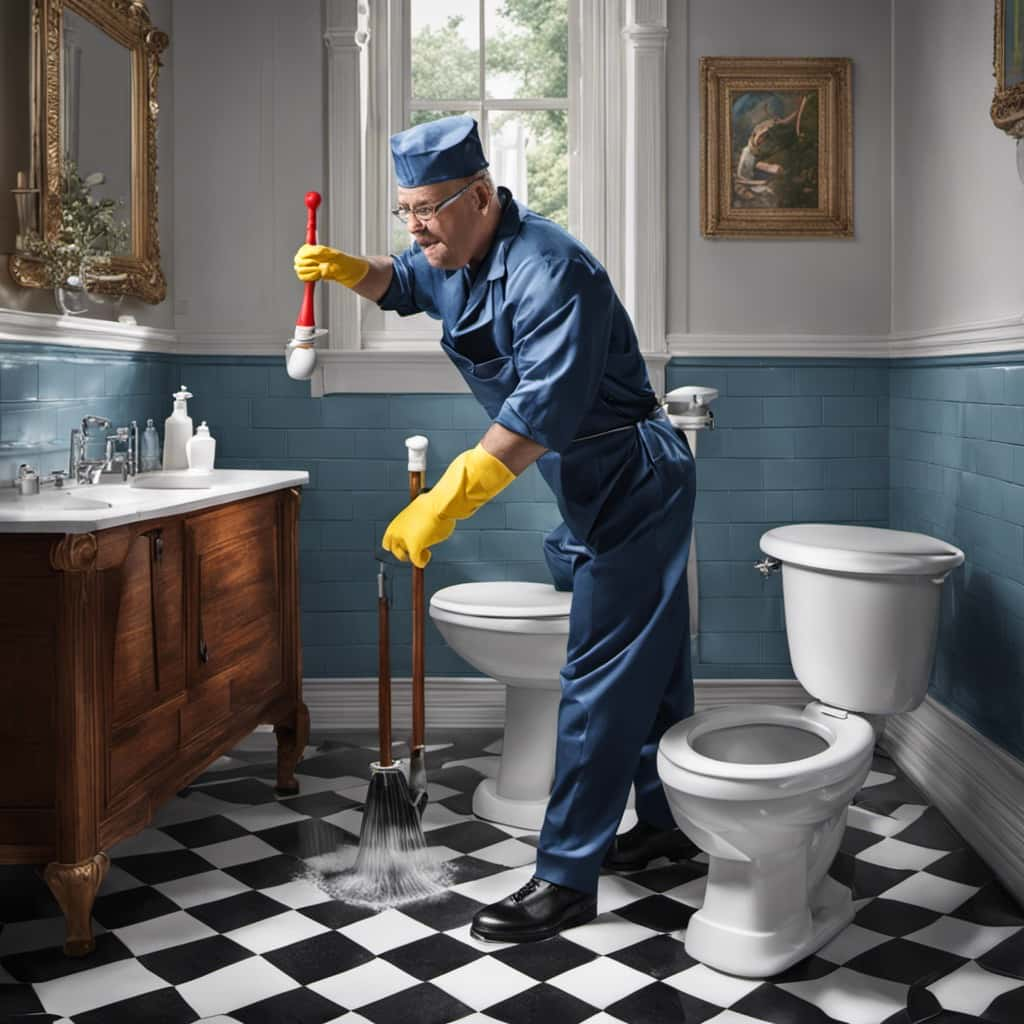
The plumbing system and space constraints in an RV may not be suitable for a marine toilet. Additionally, properly disposing of waste from a marine toilet in an RV requires careful consideration.
It’s crucial to weigh the pros and cons and seek expert opinions before making a decision.

